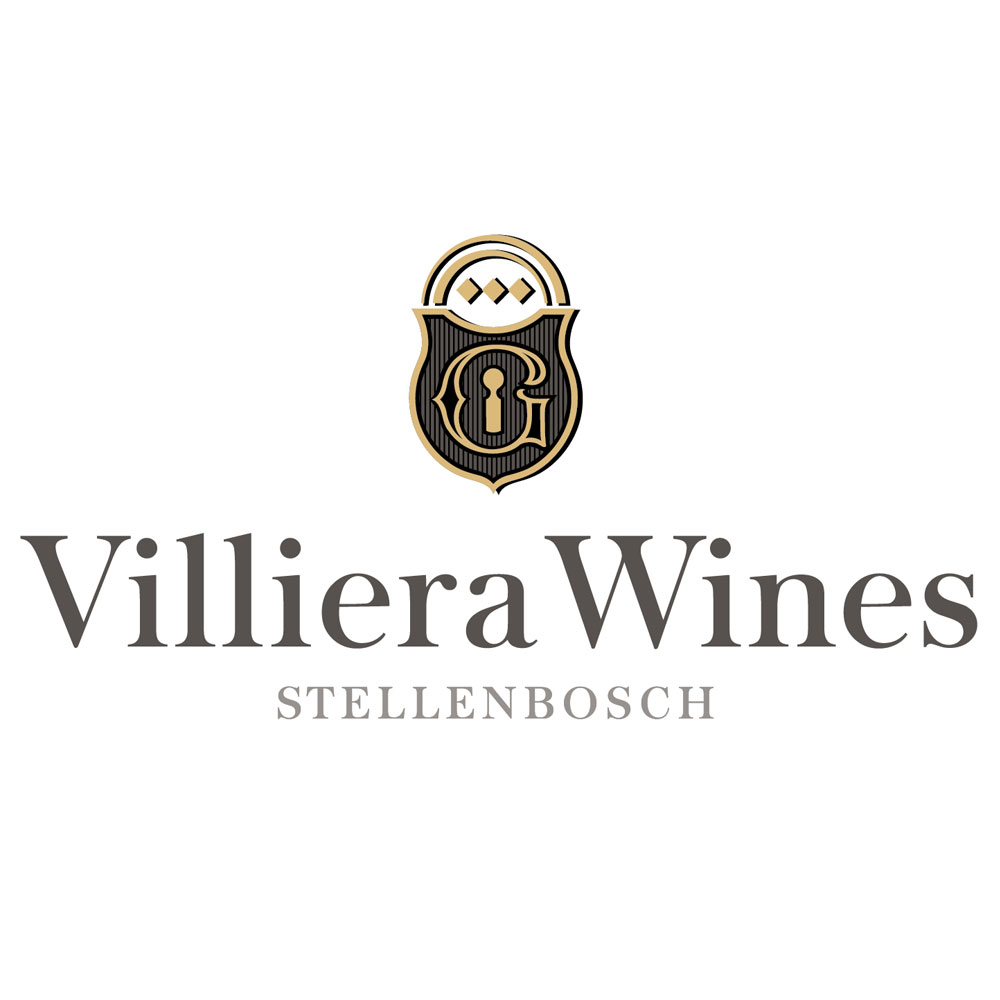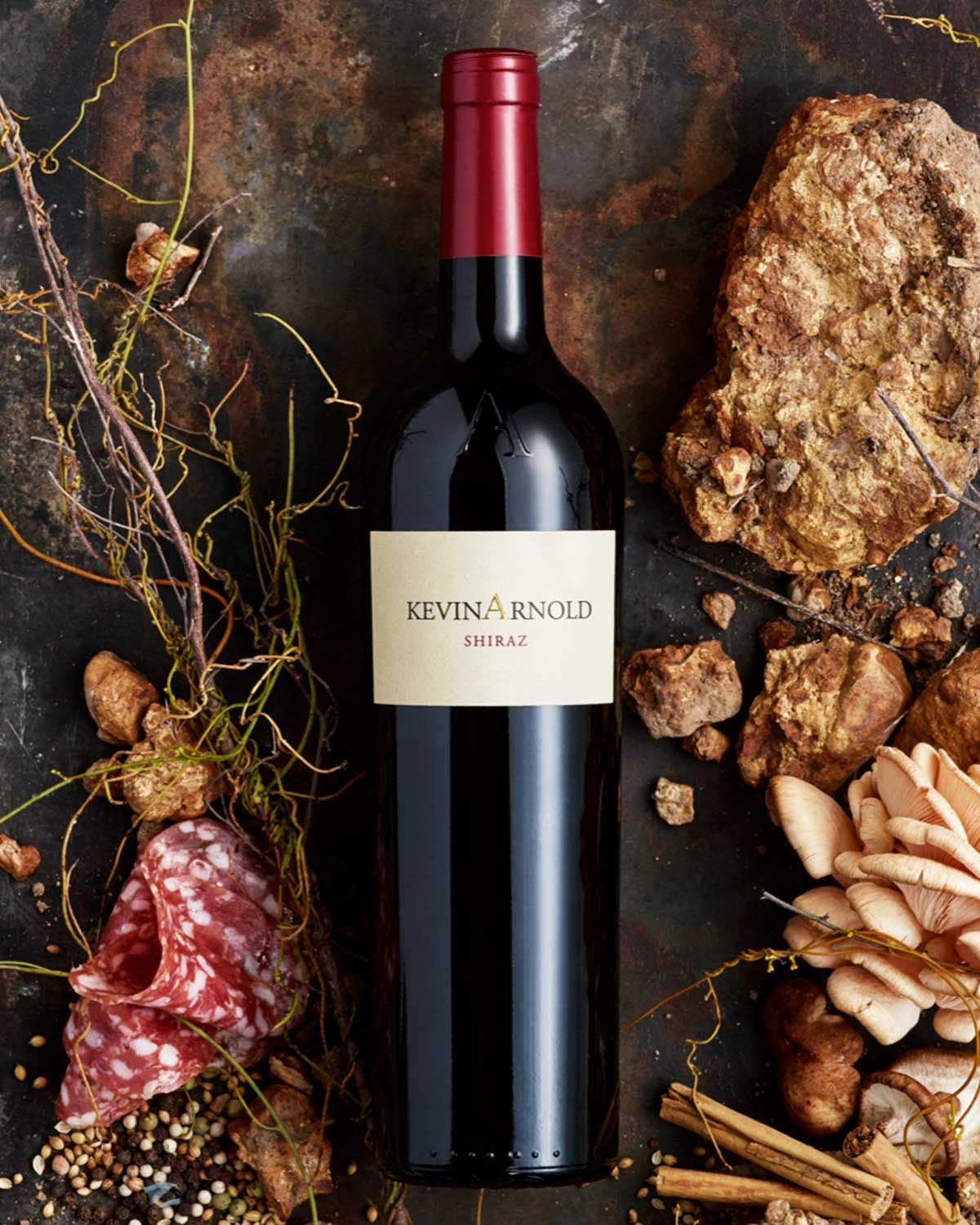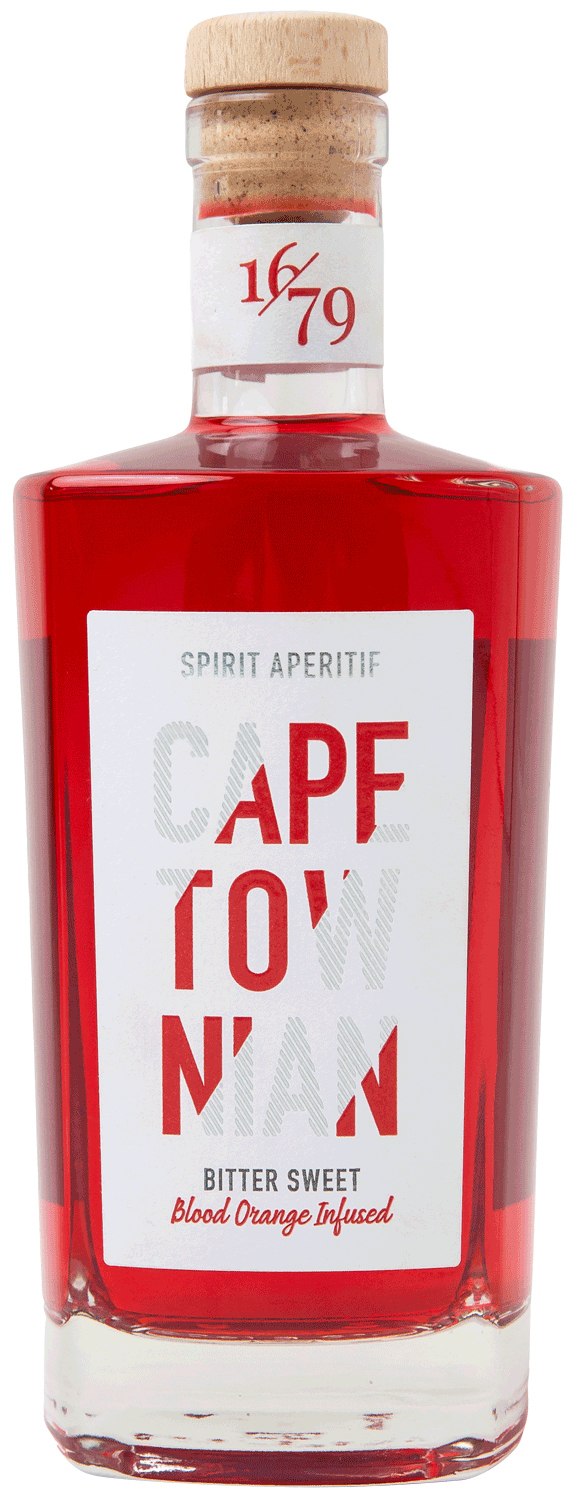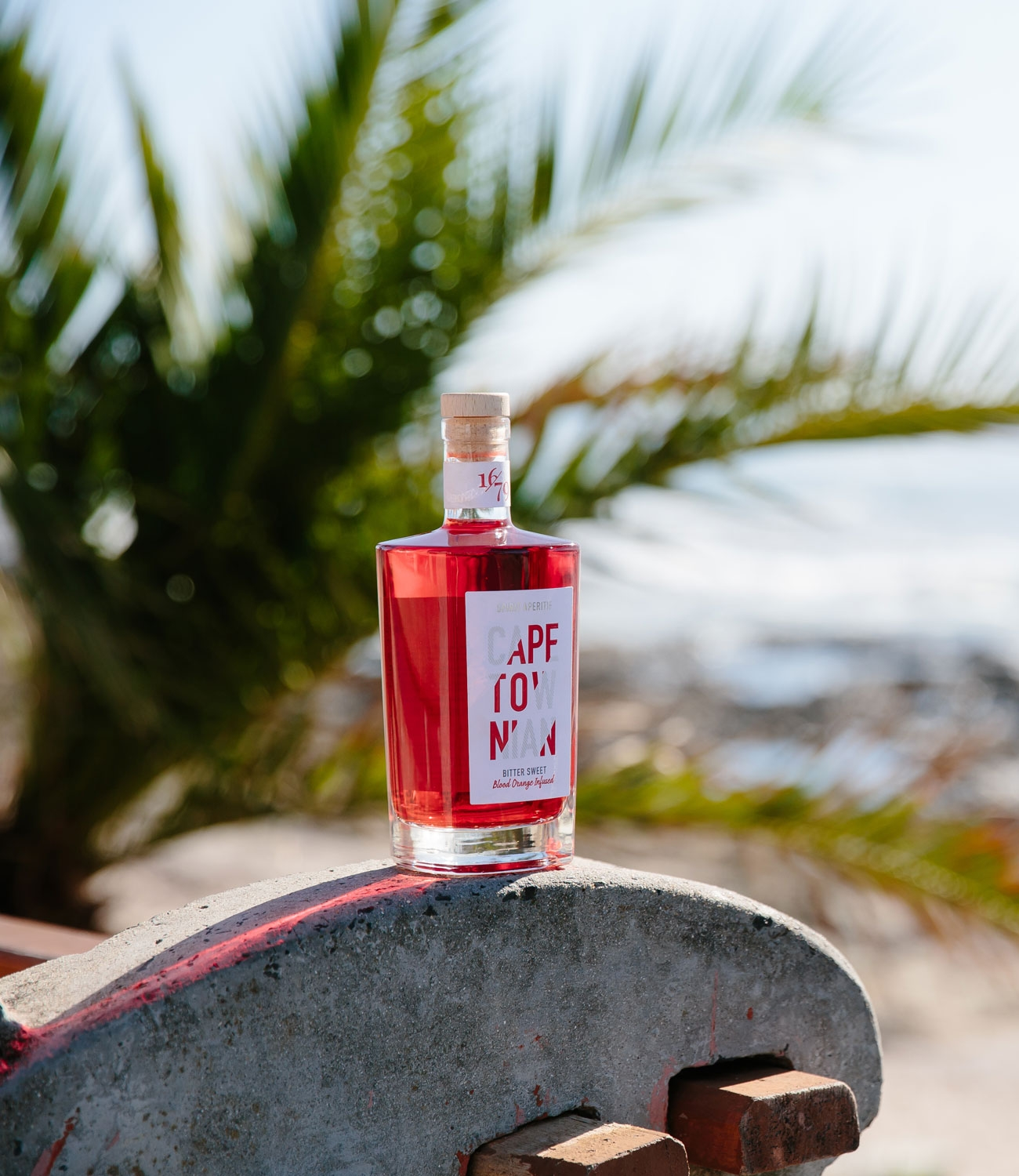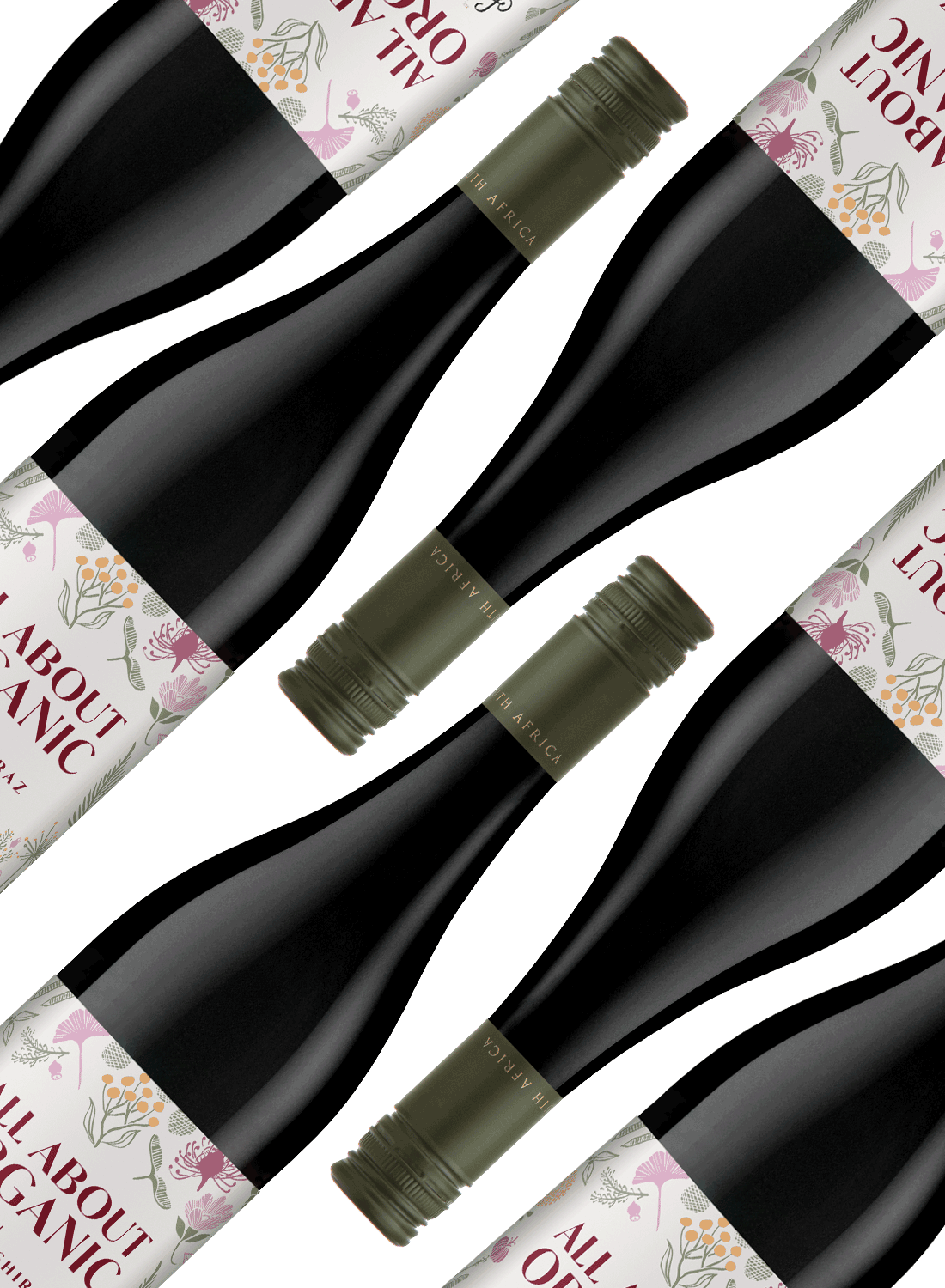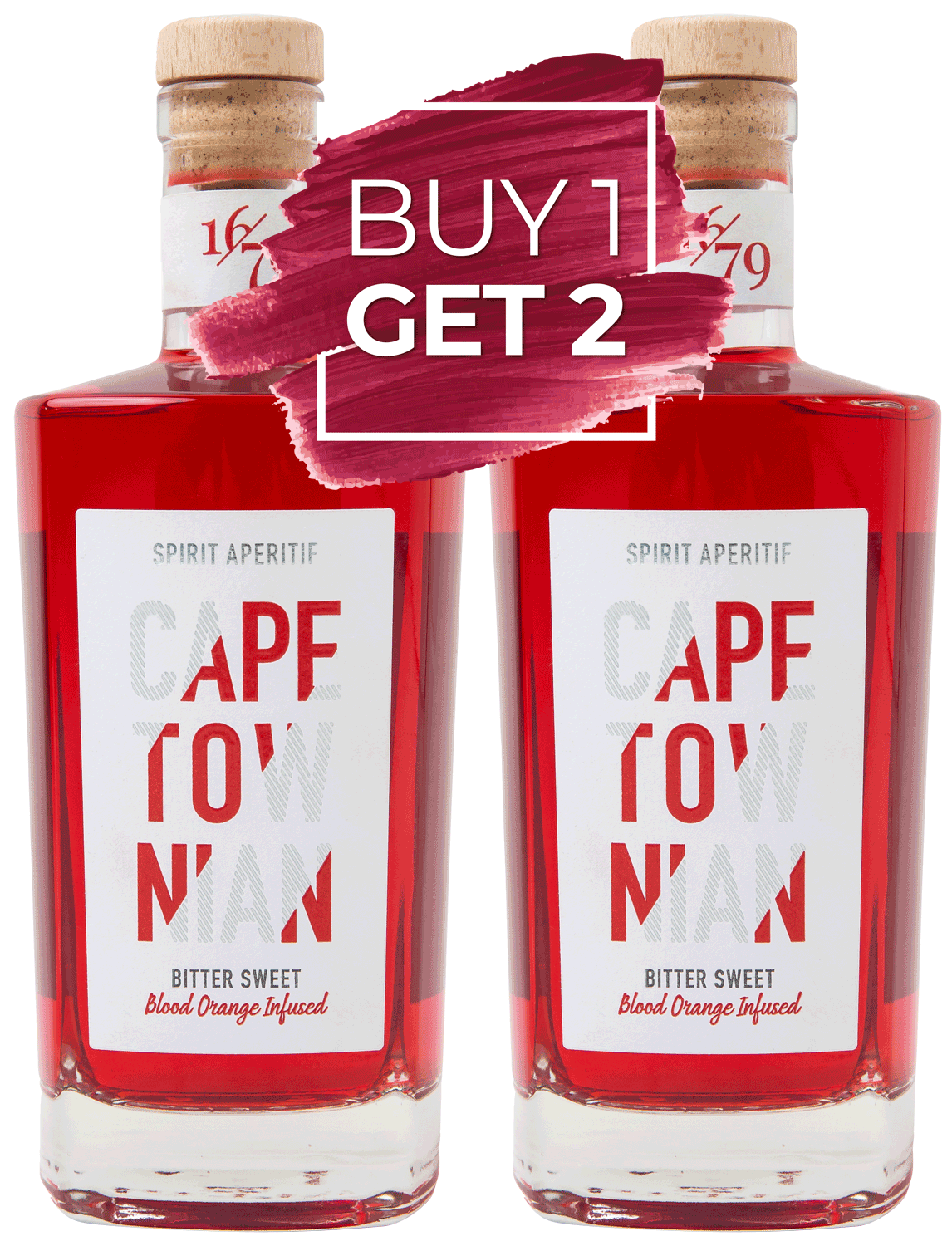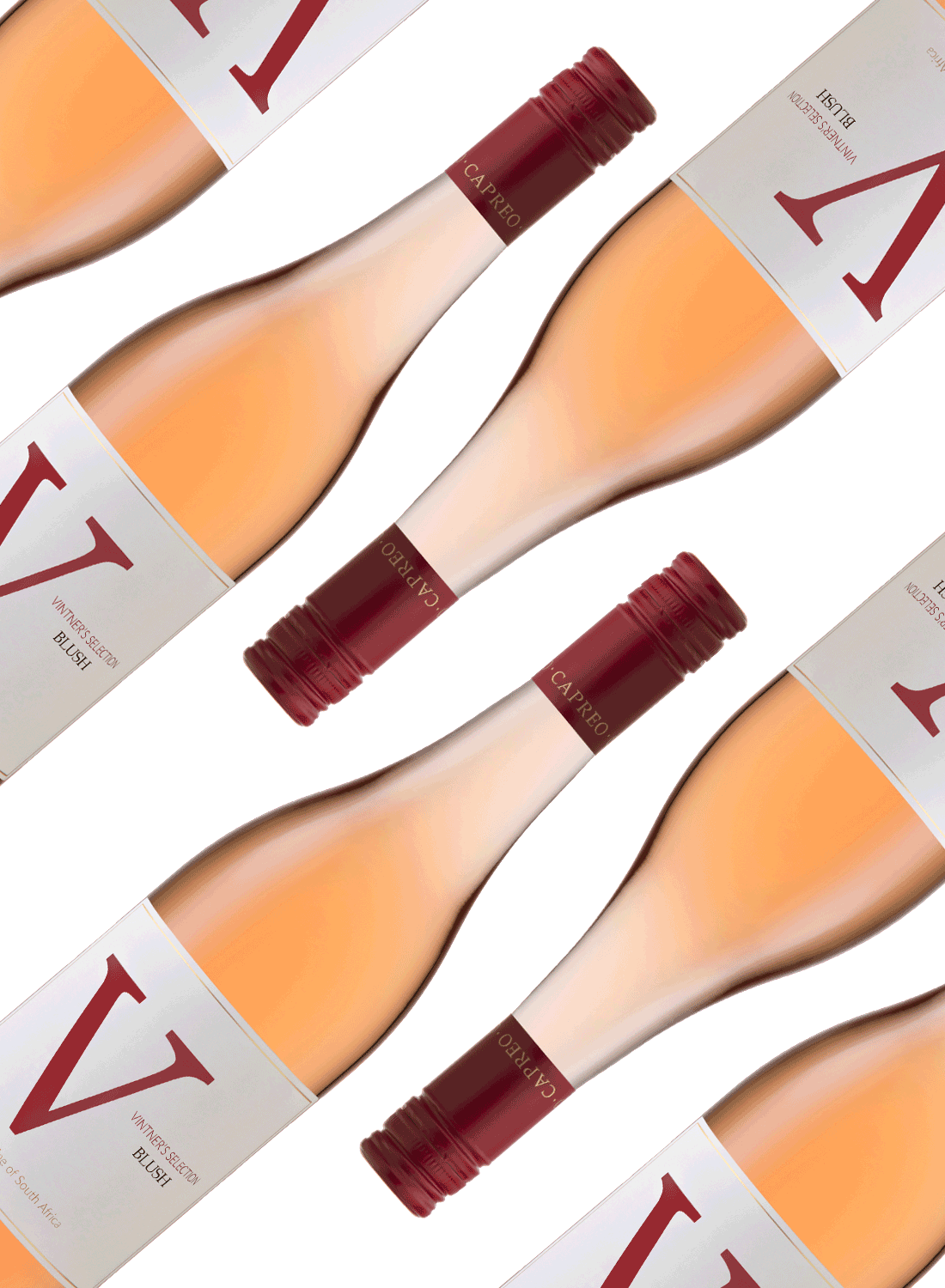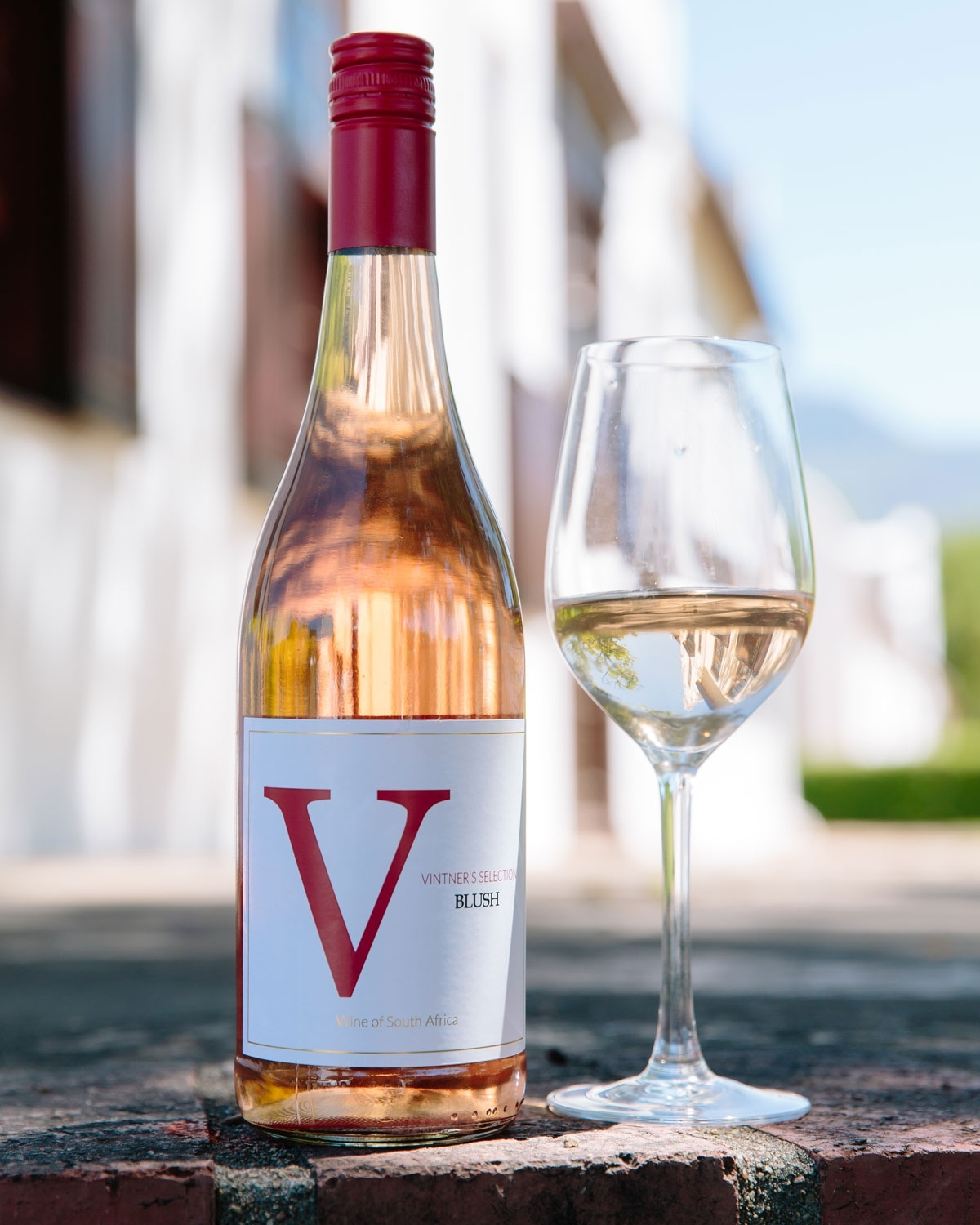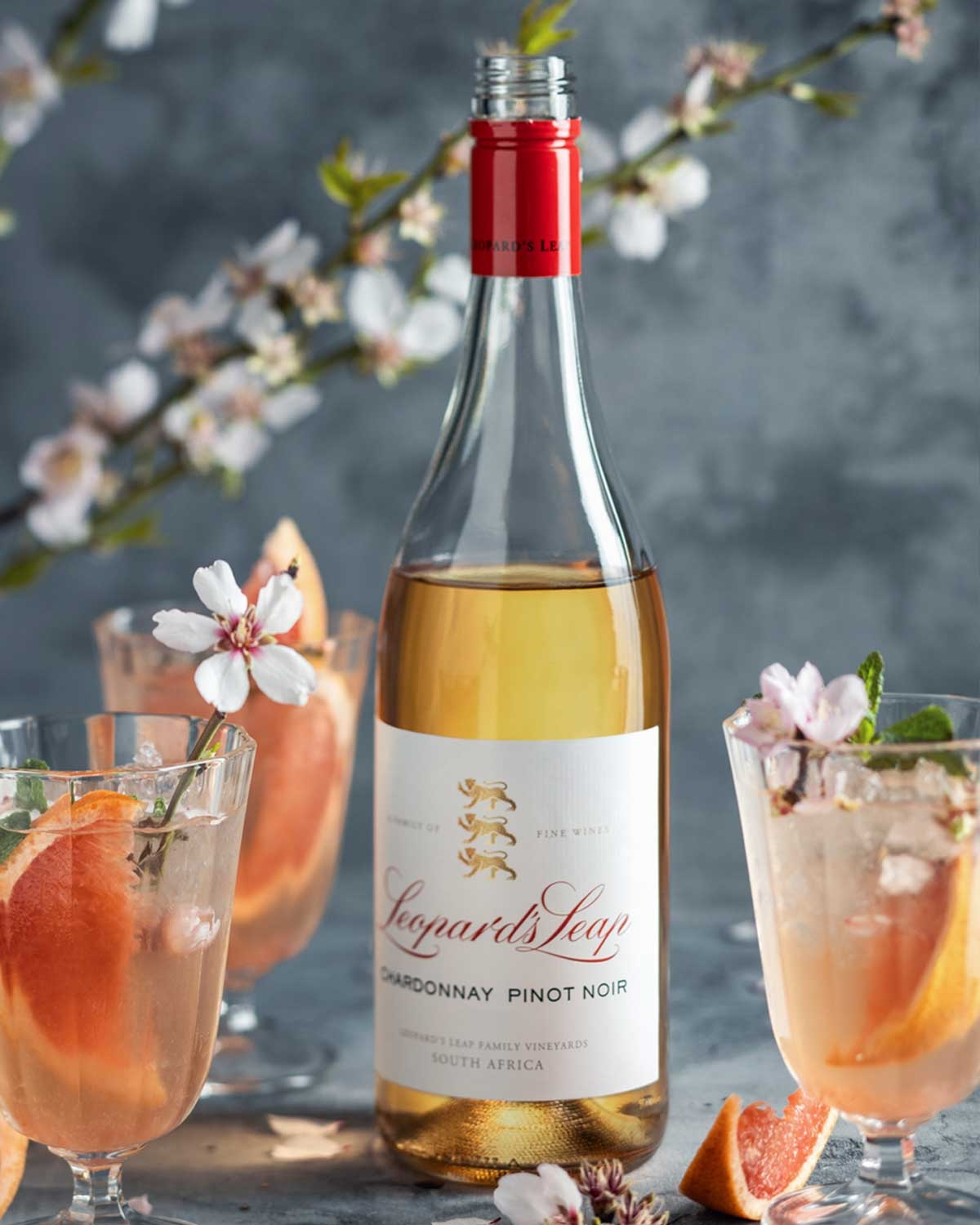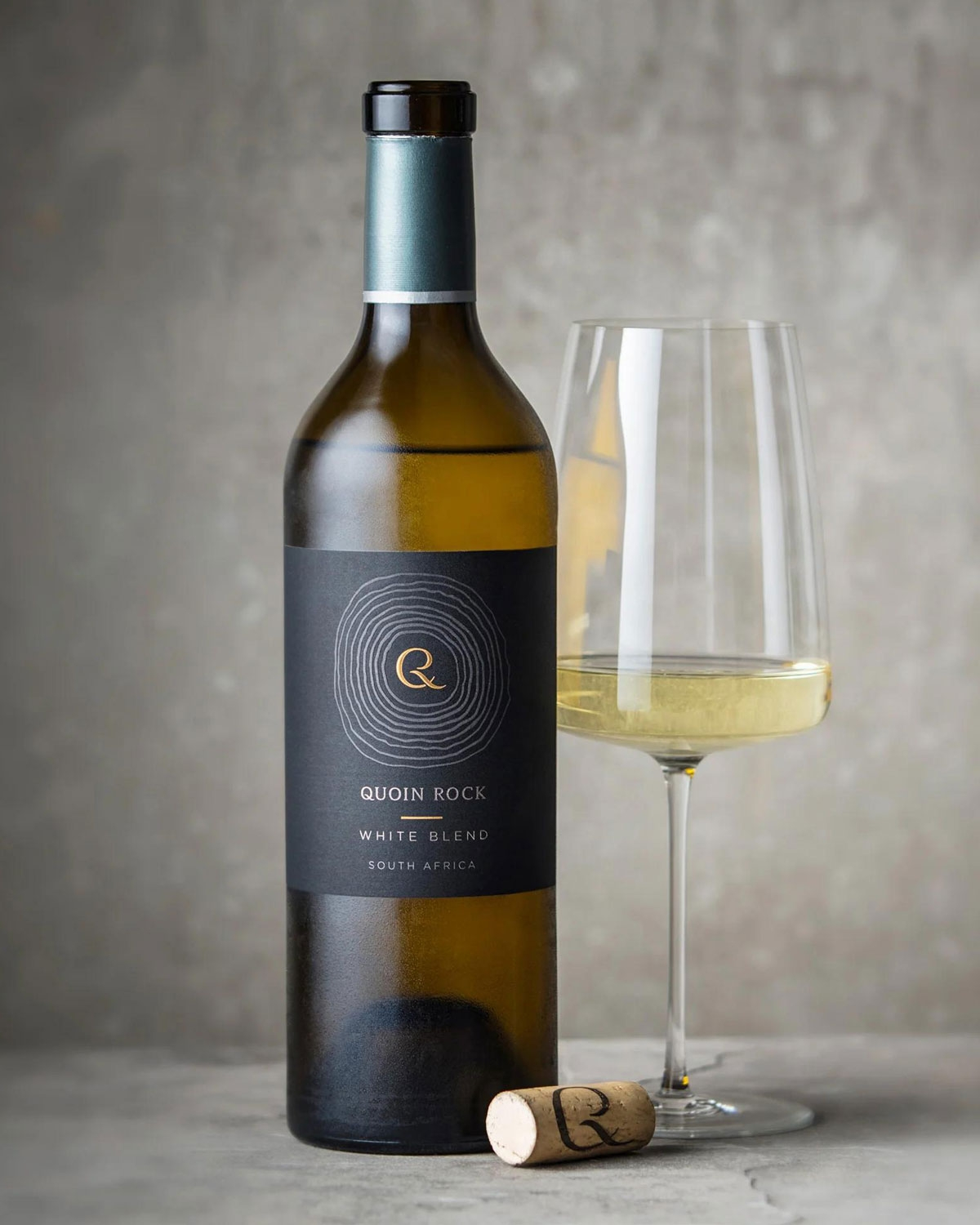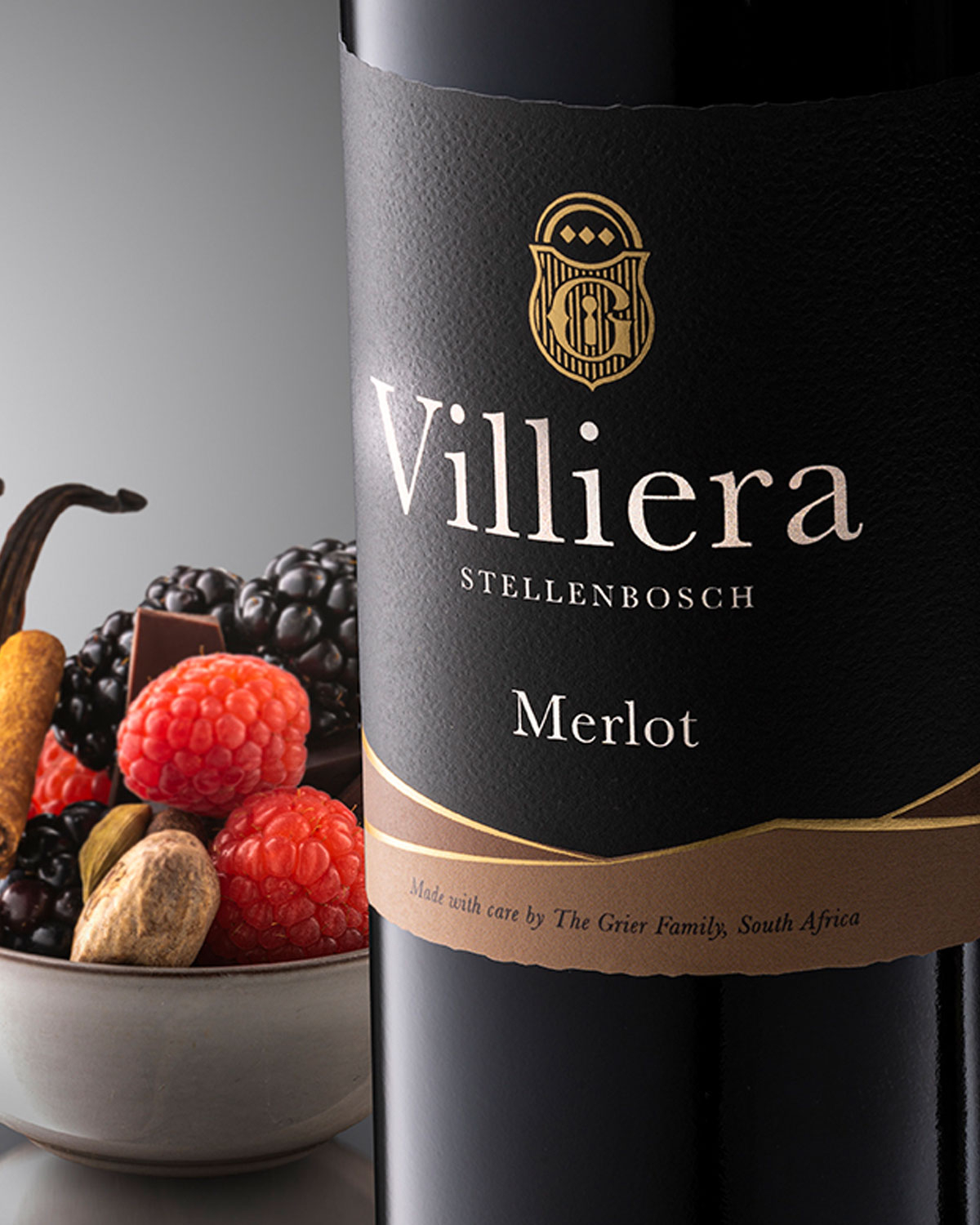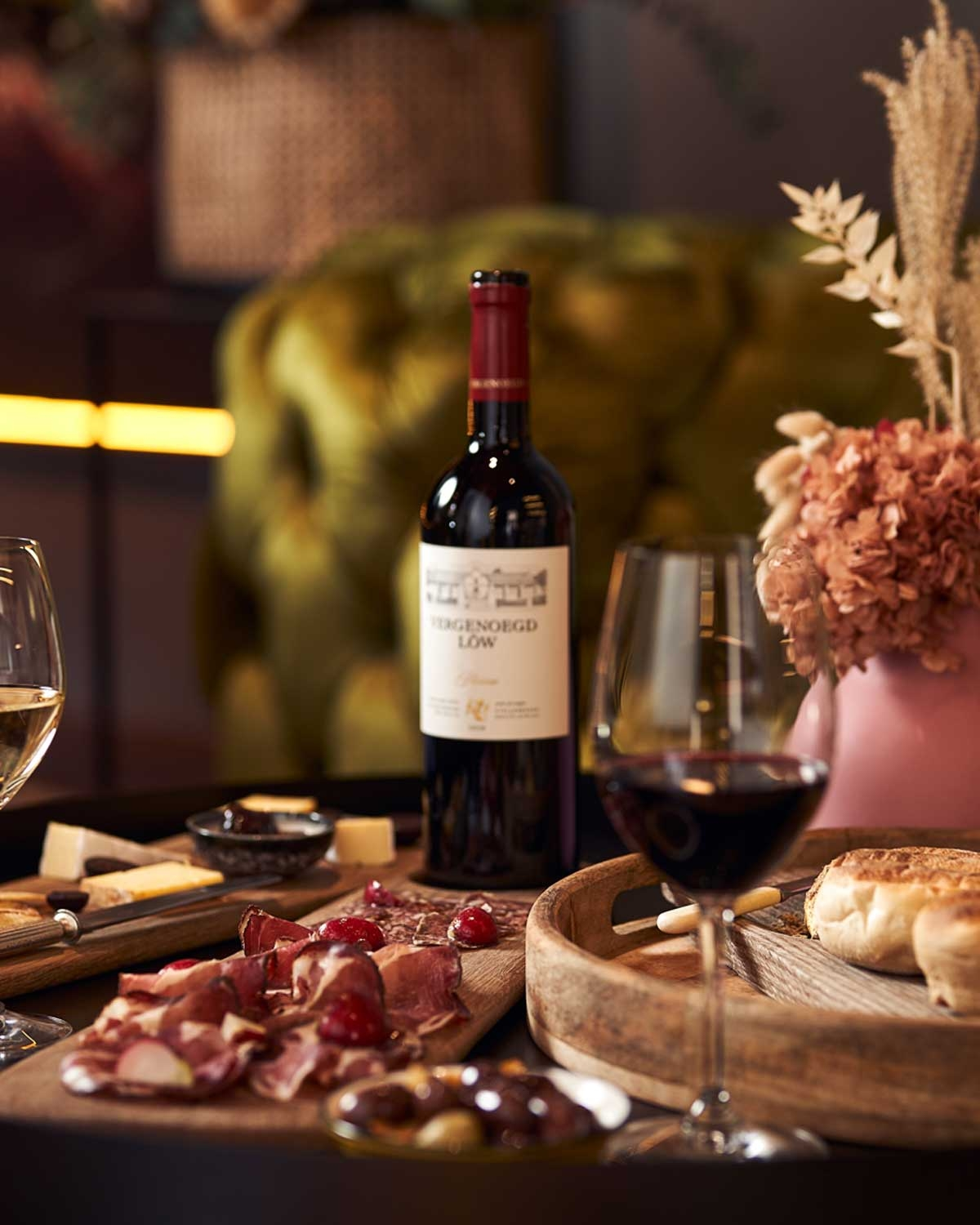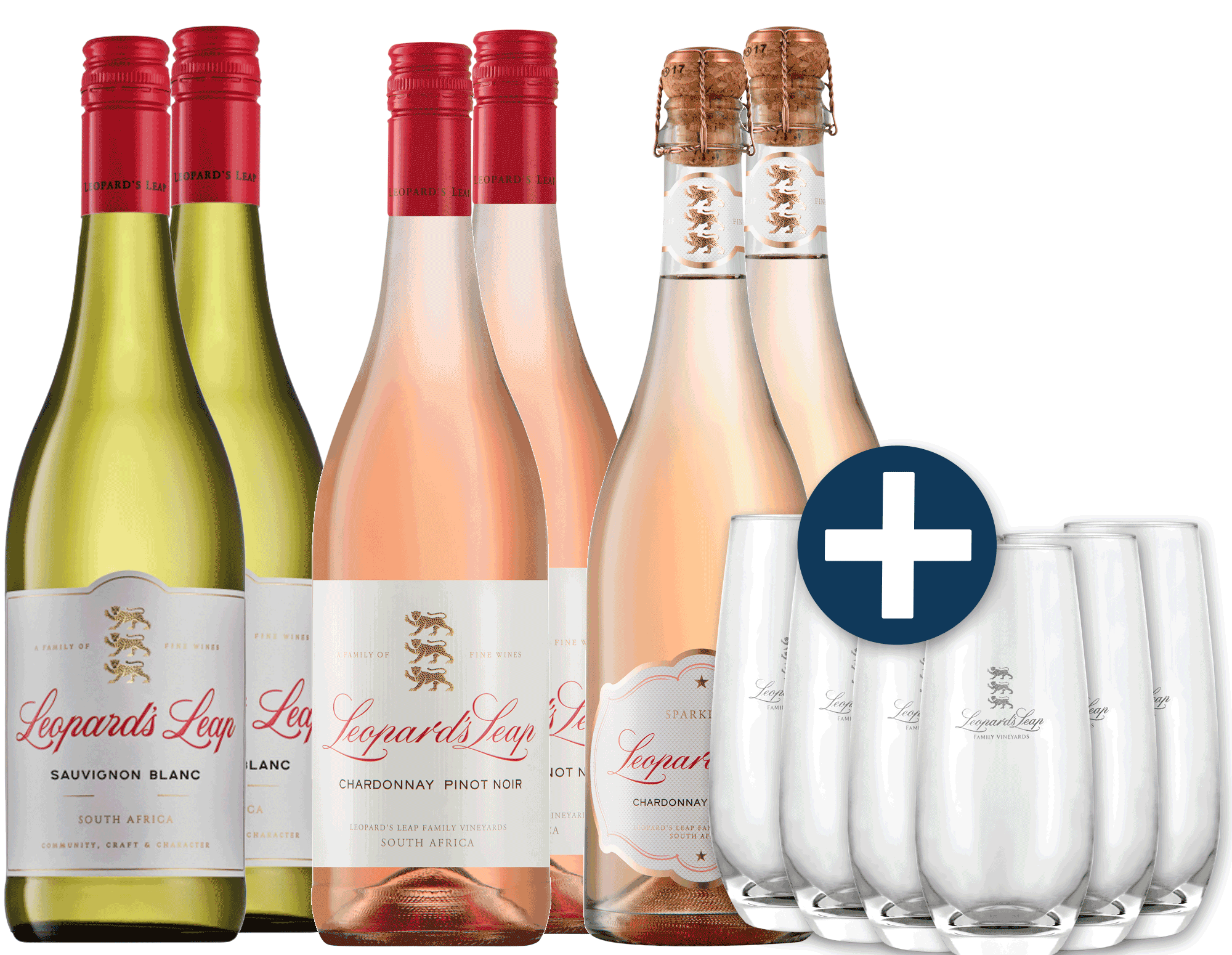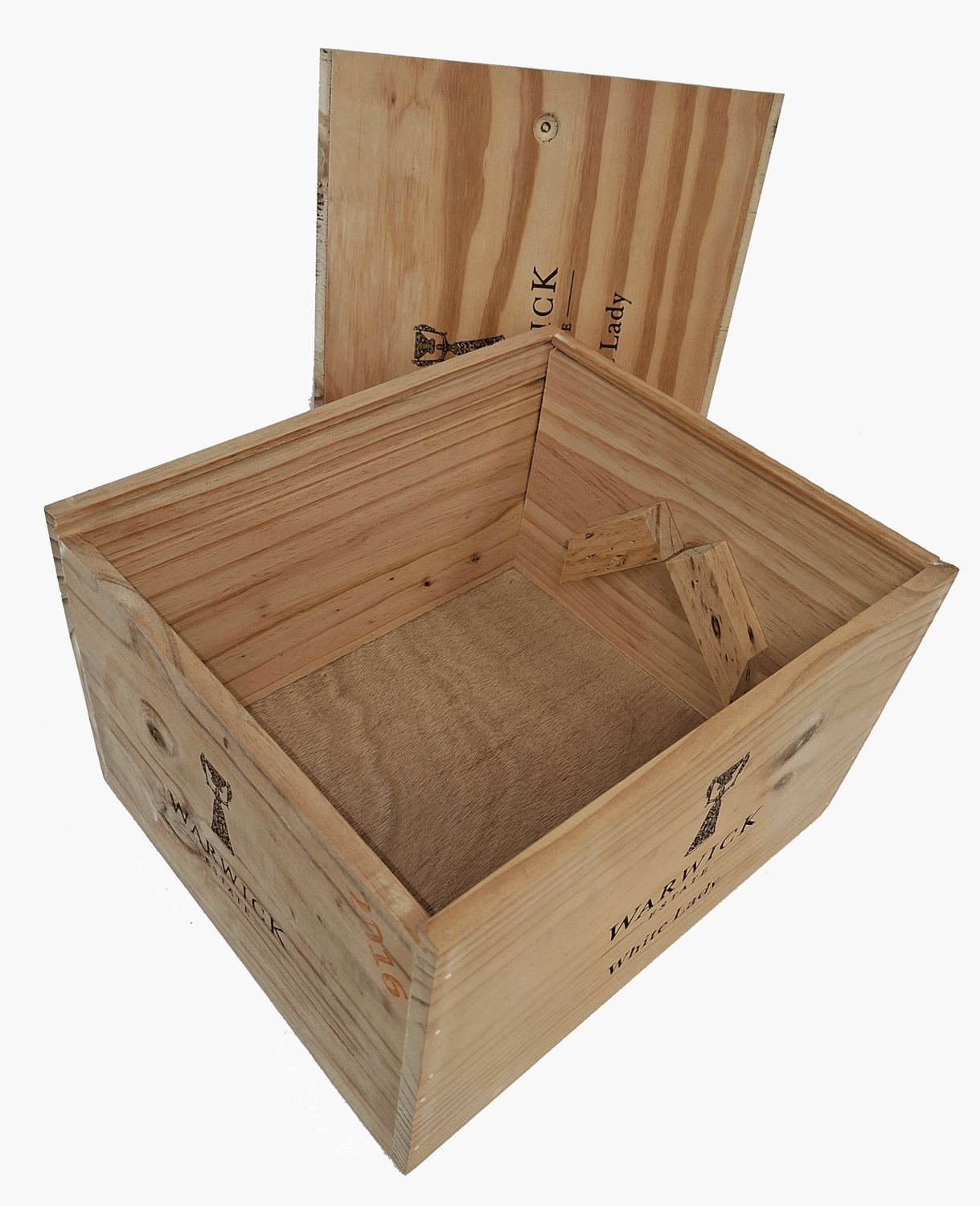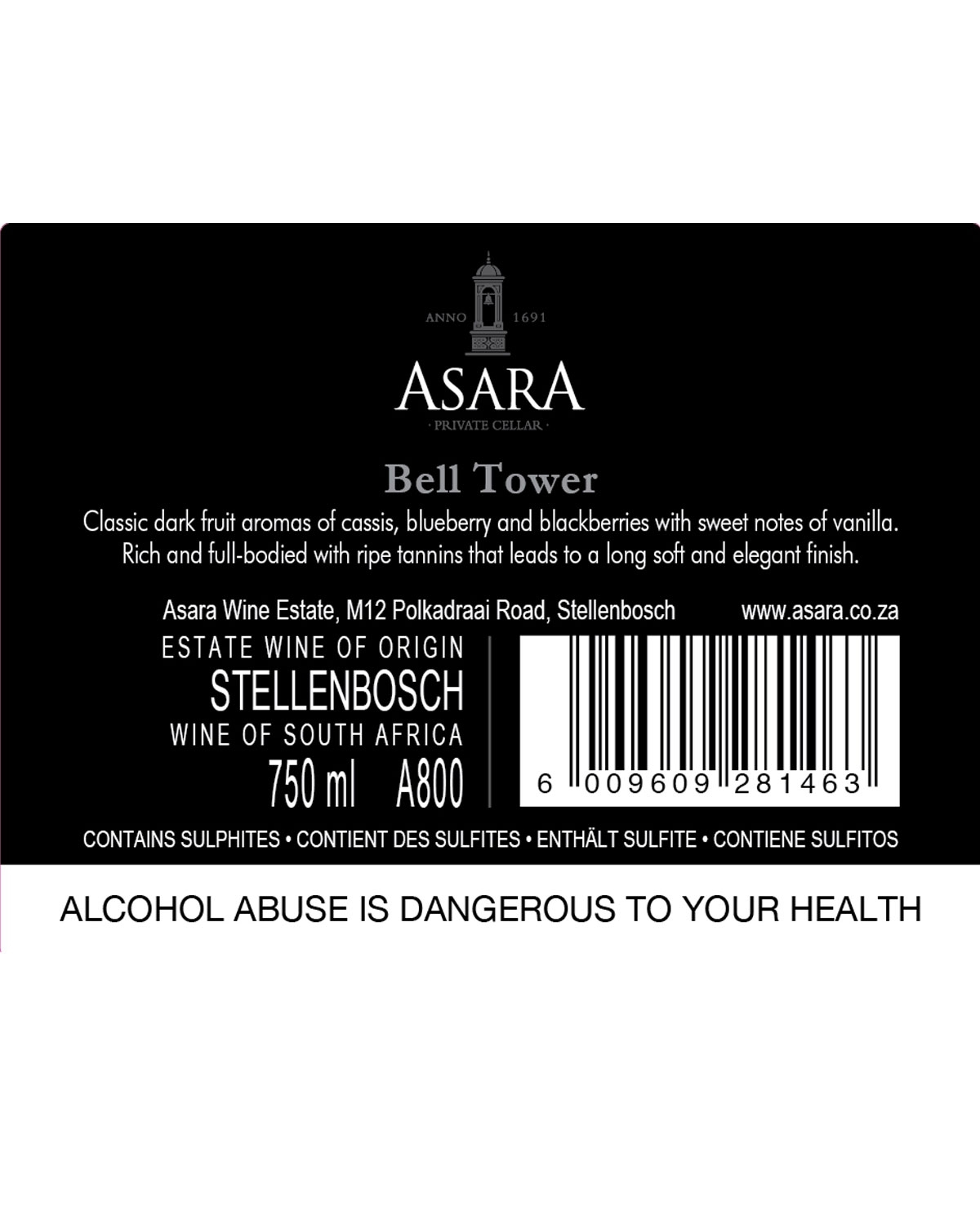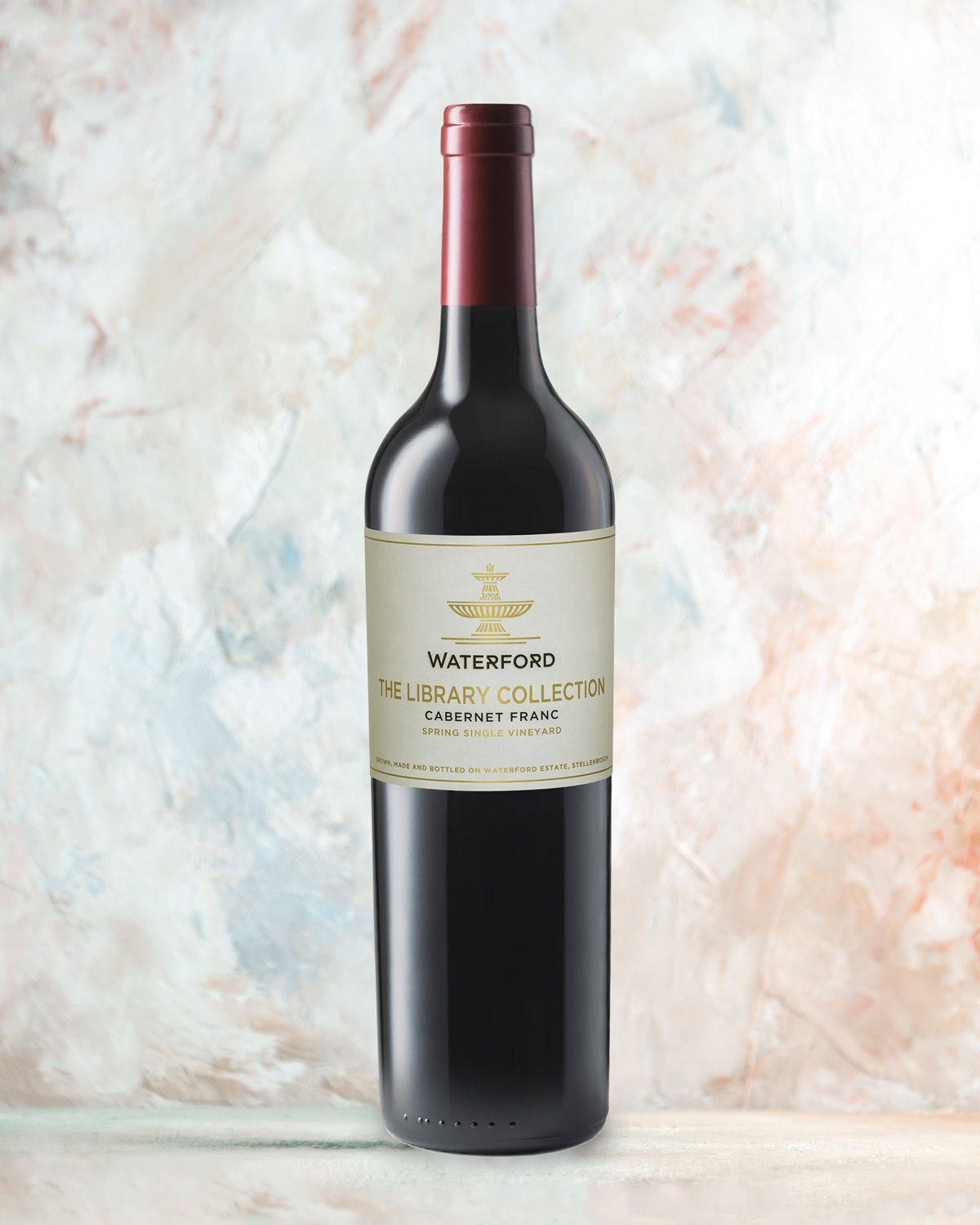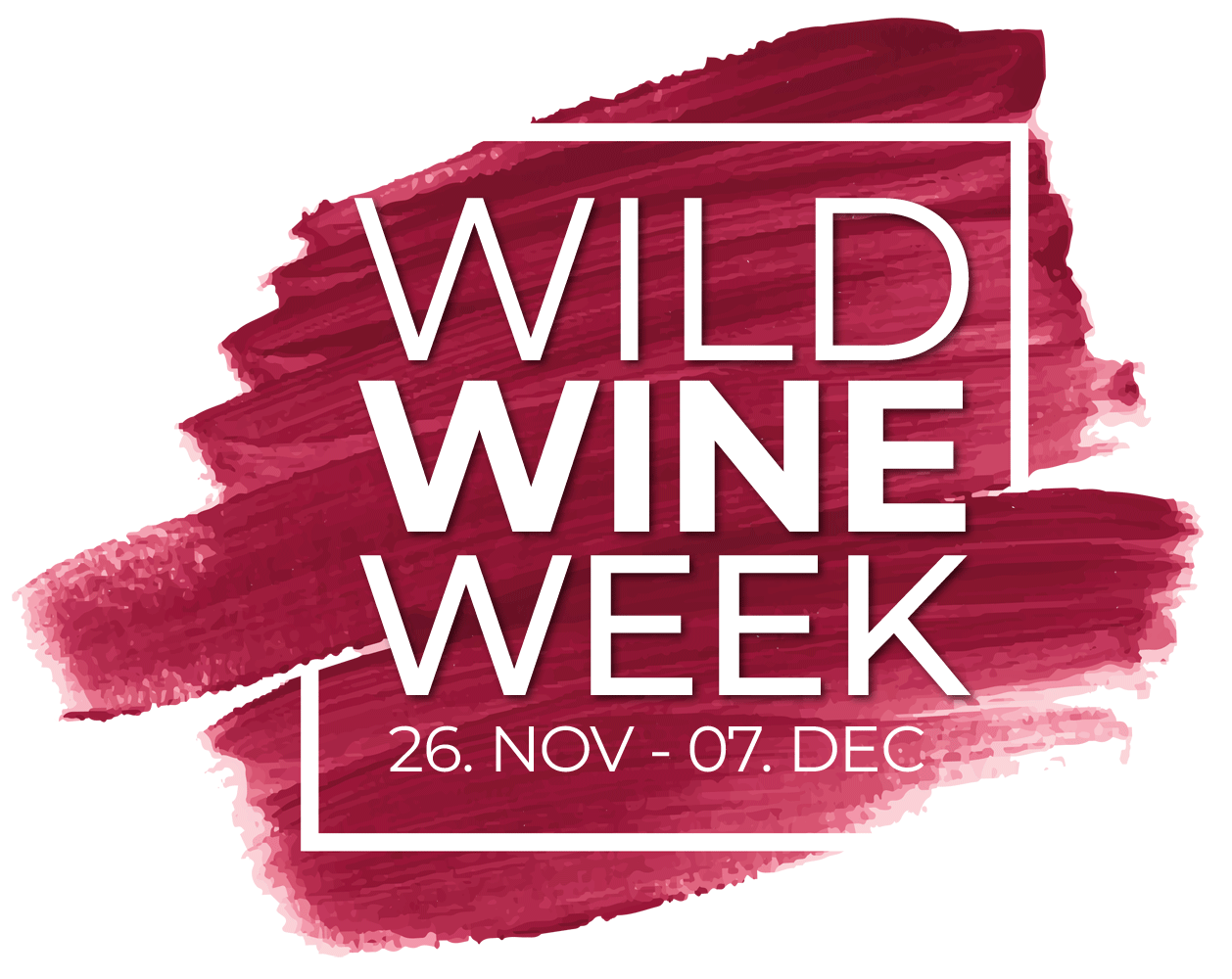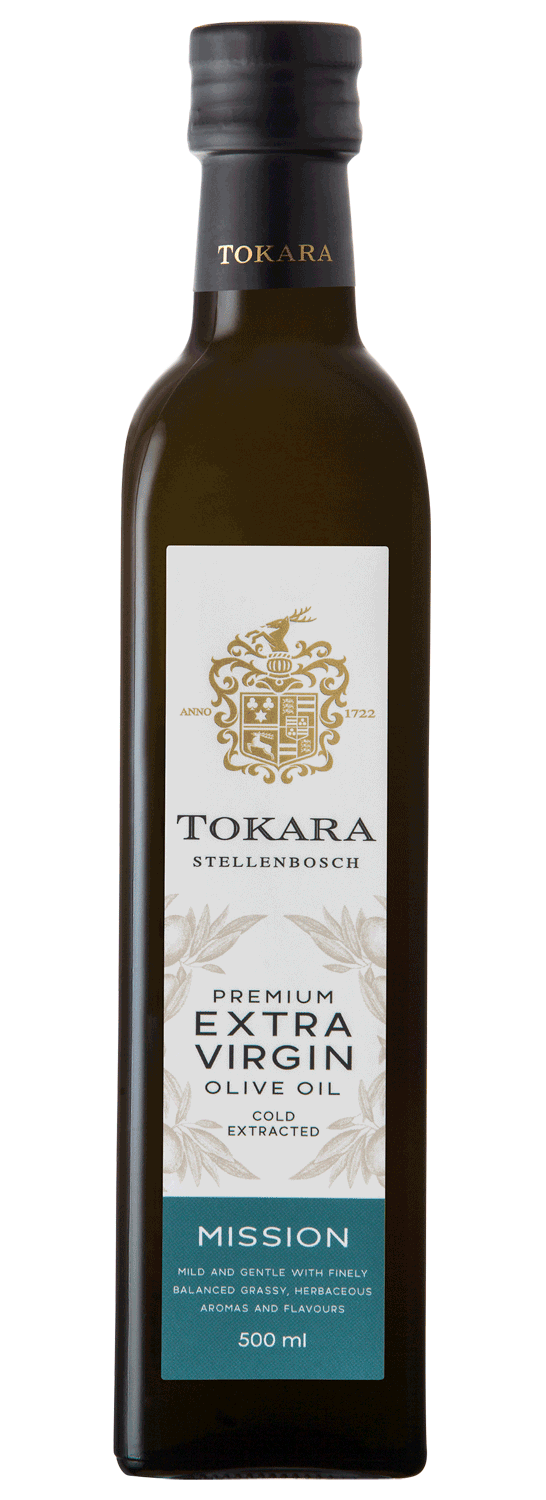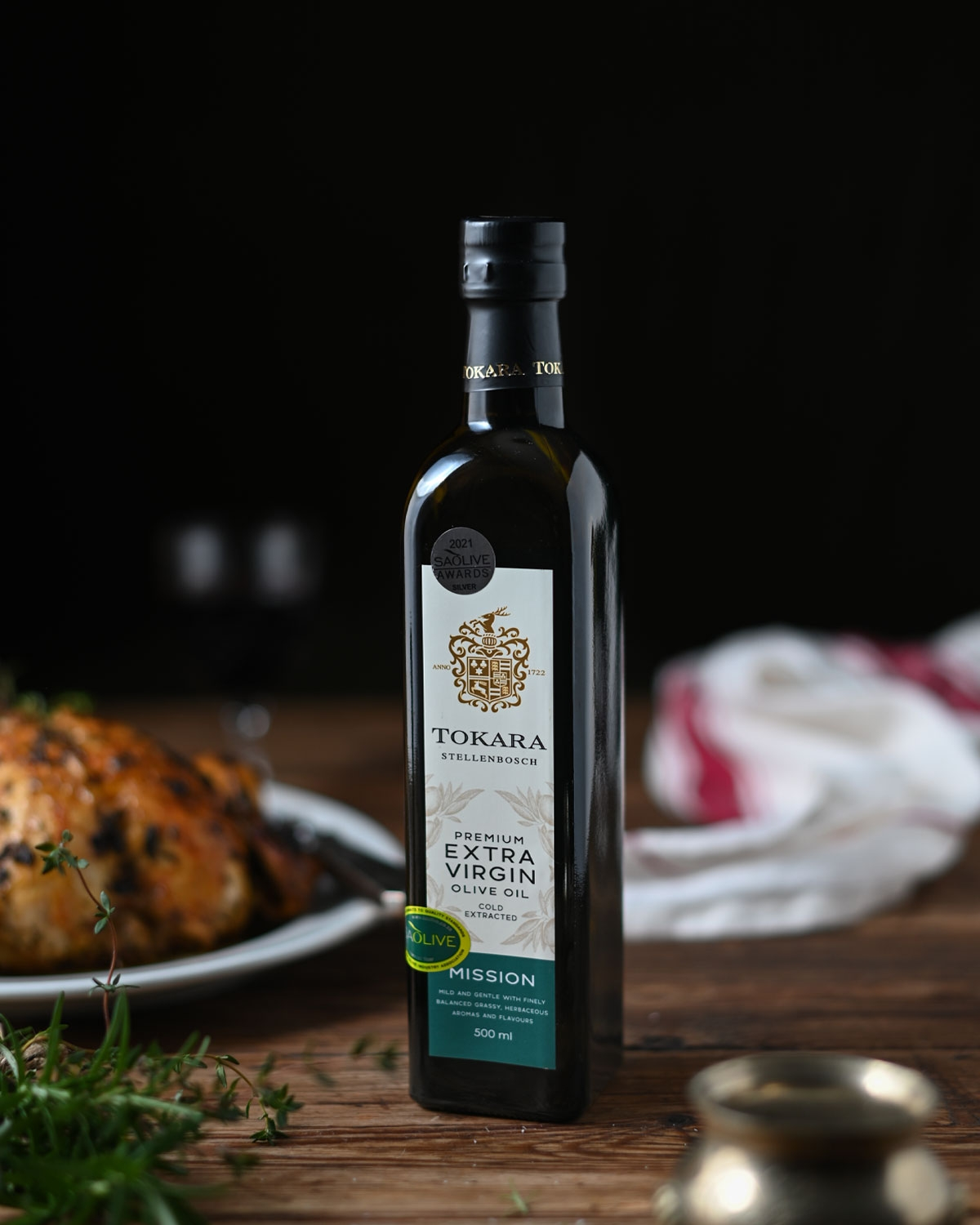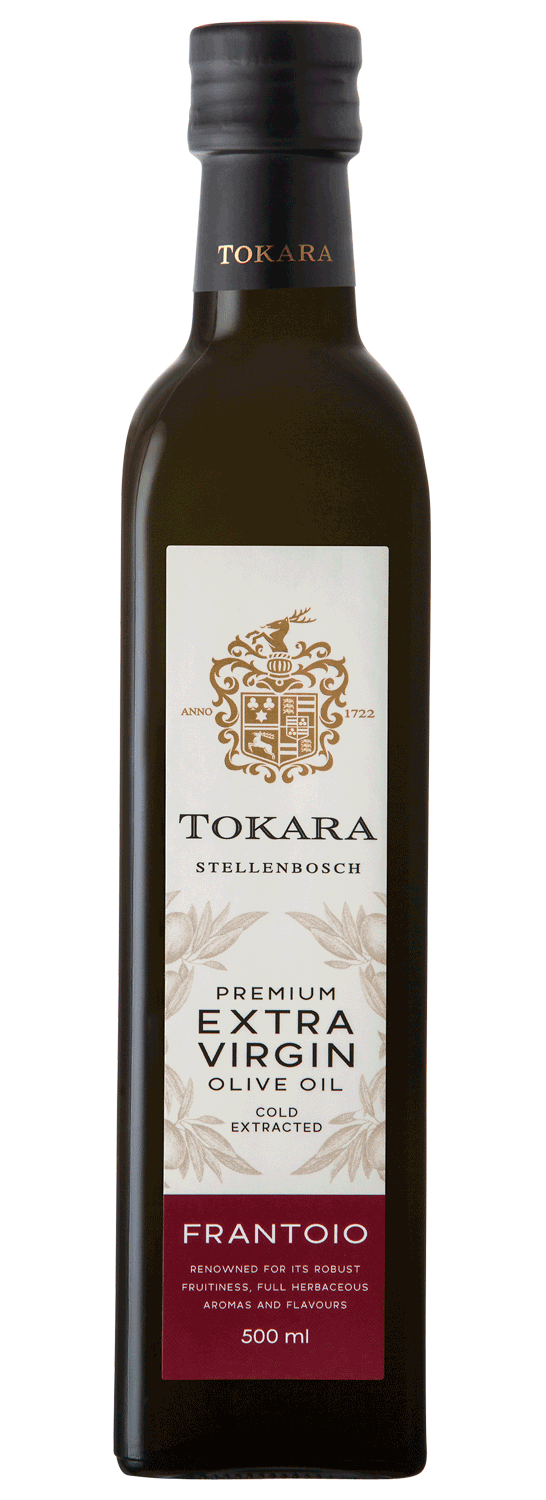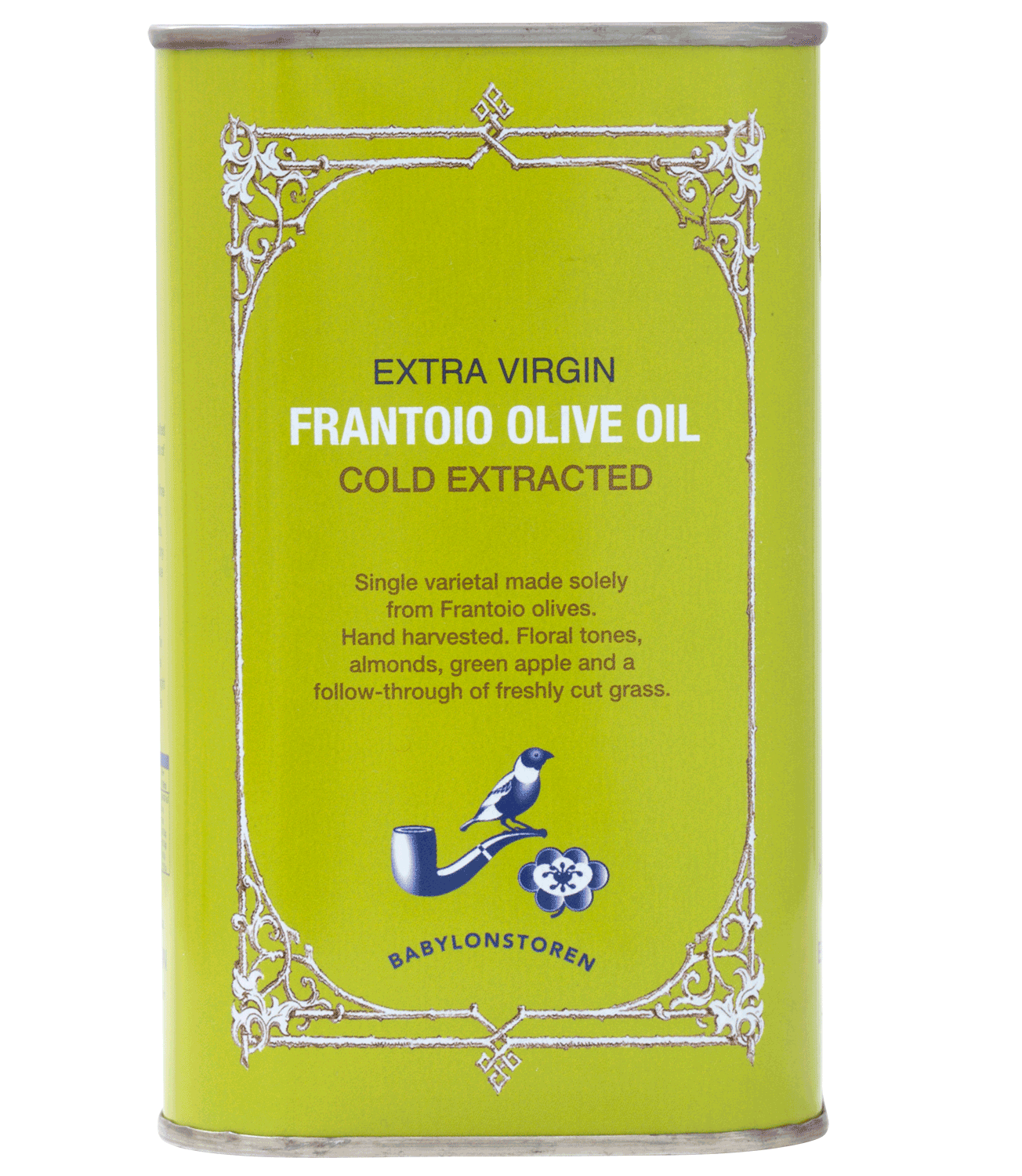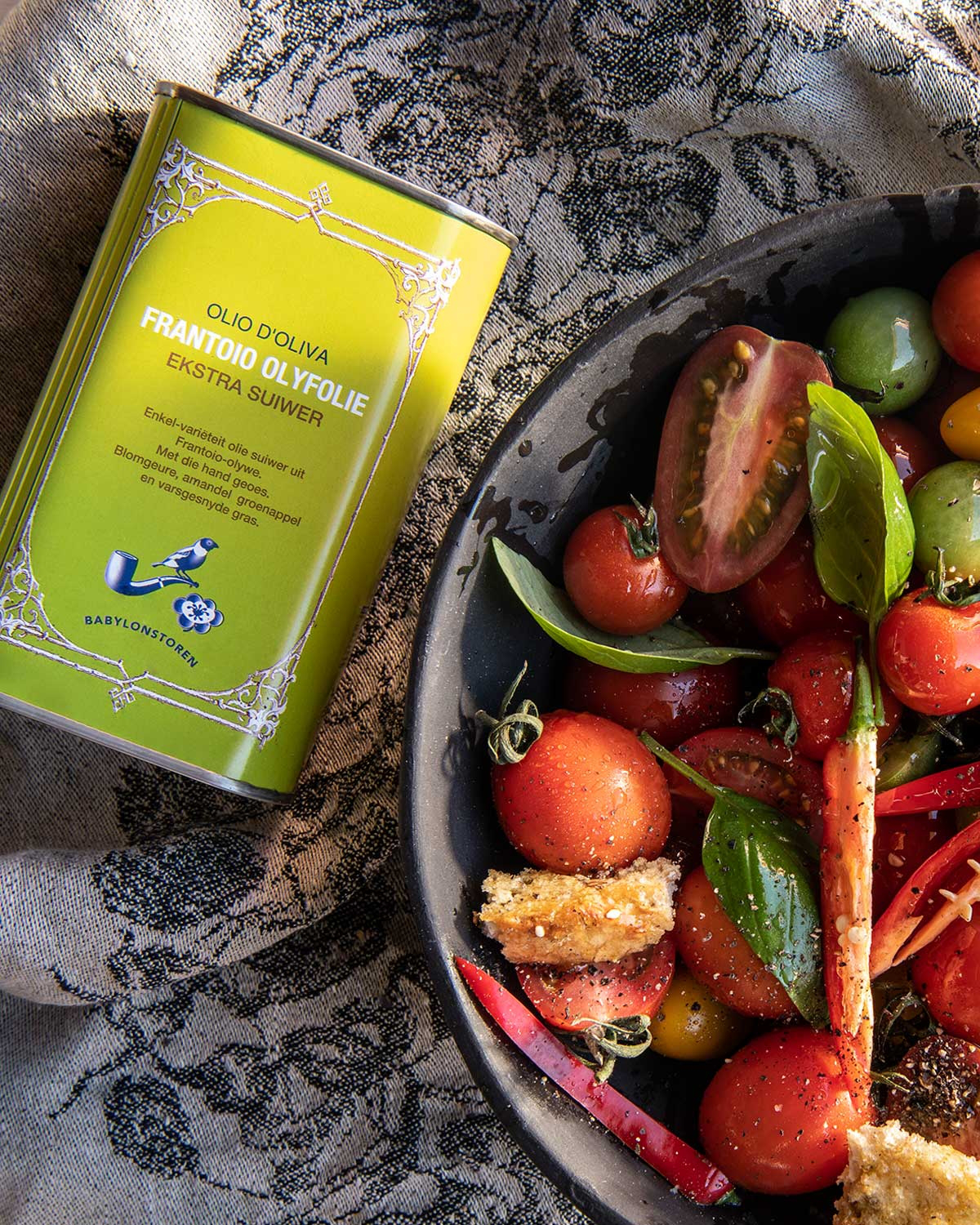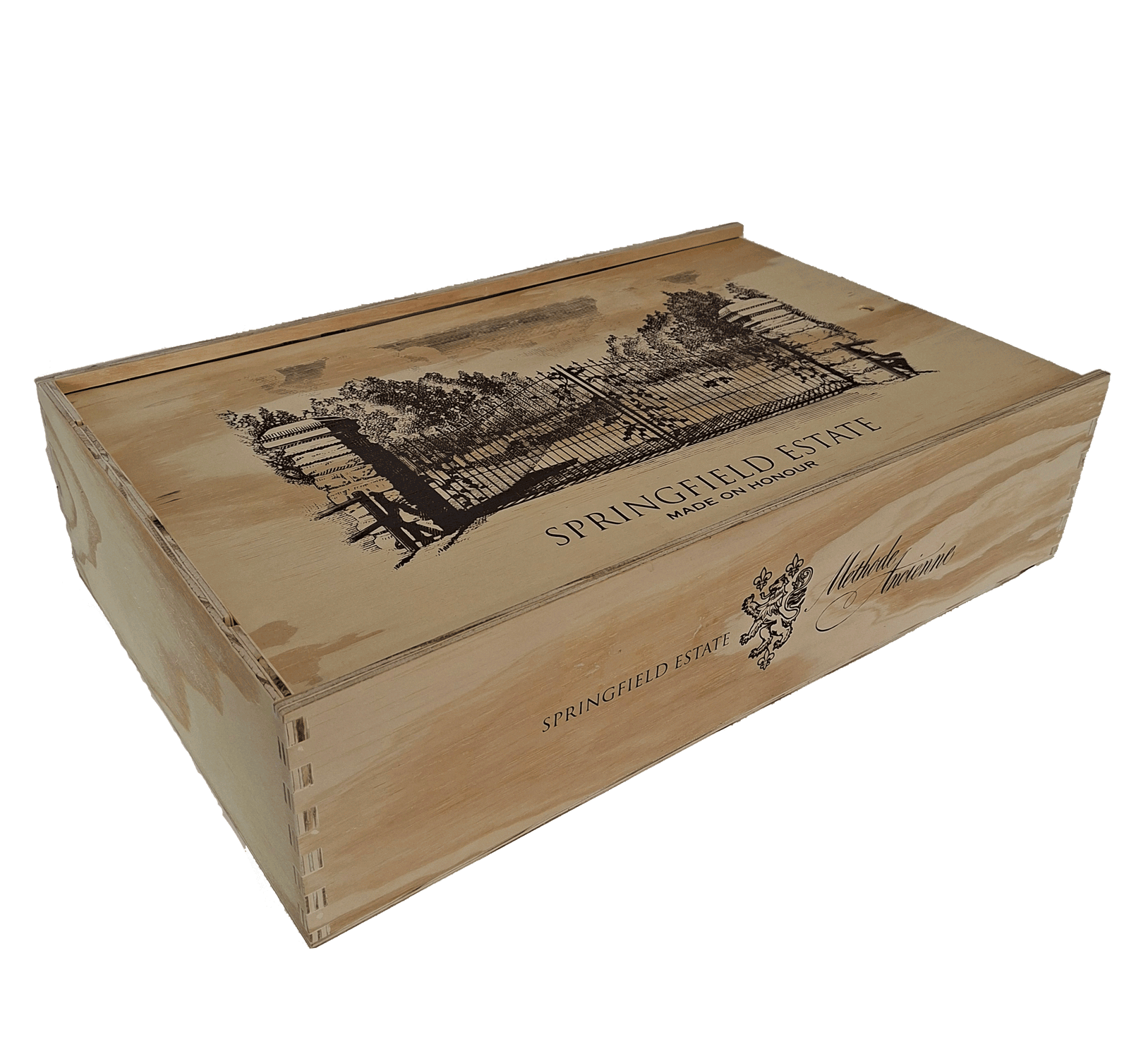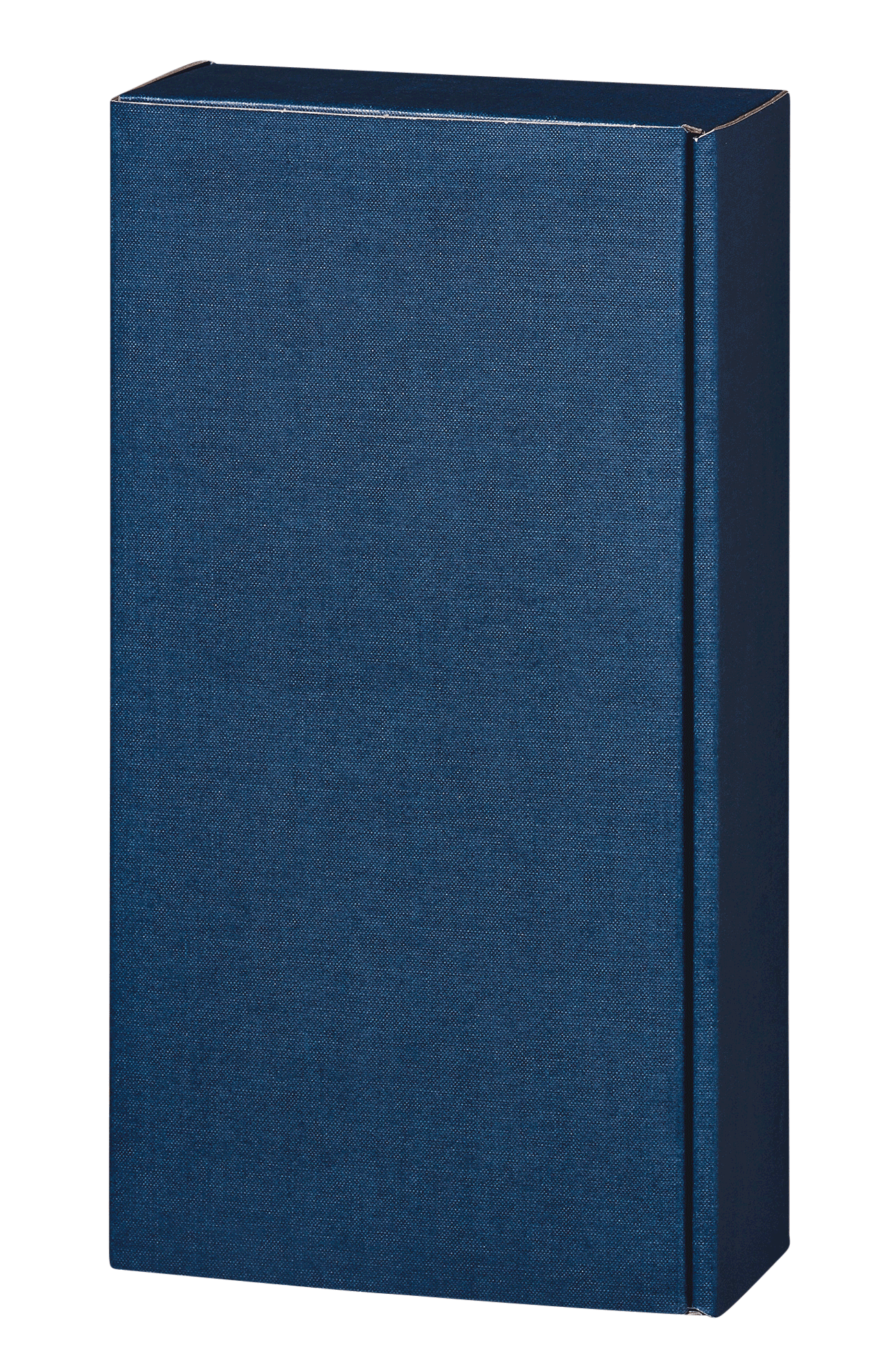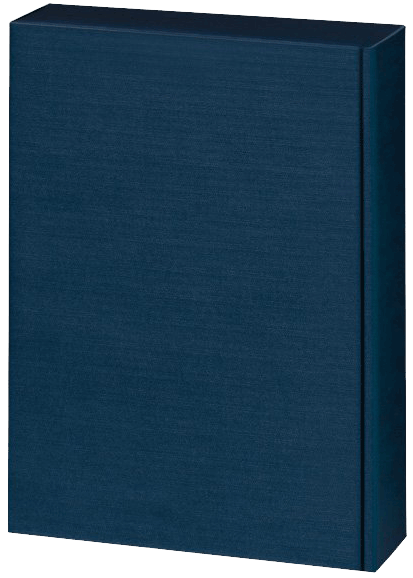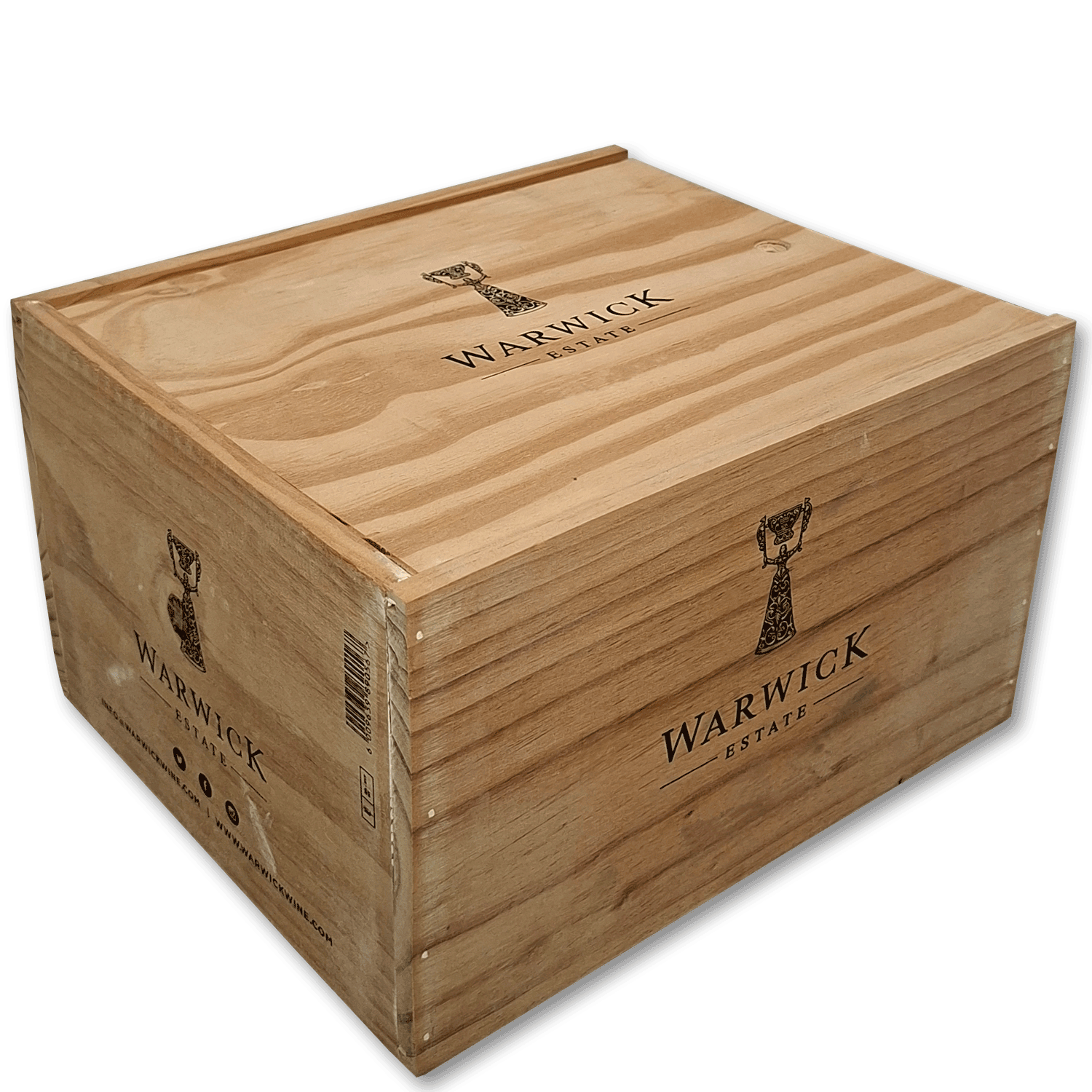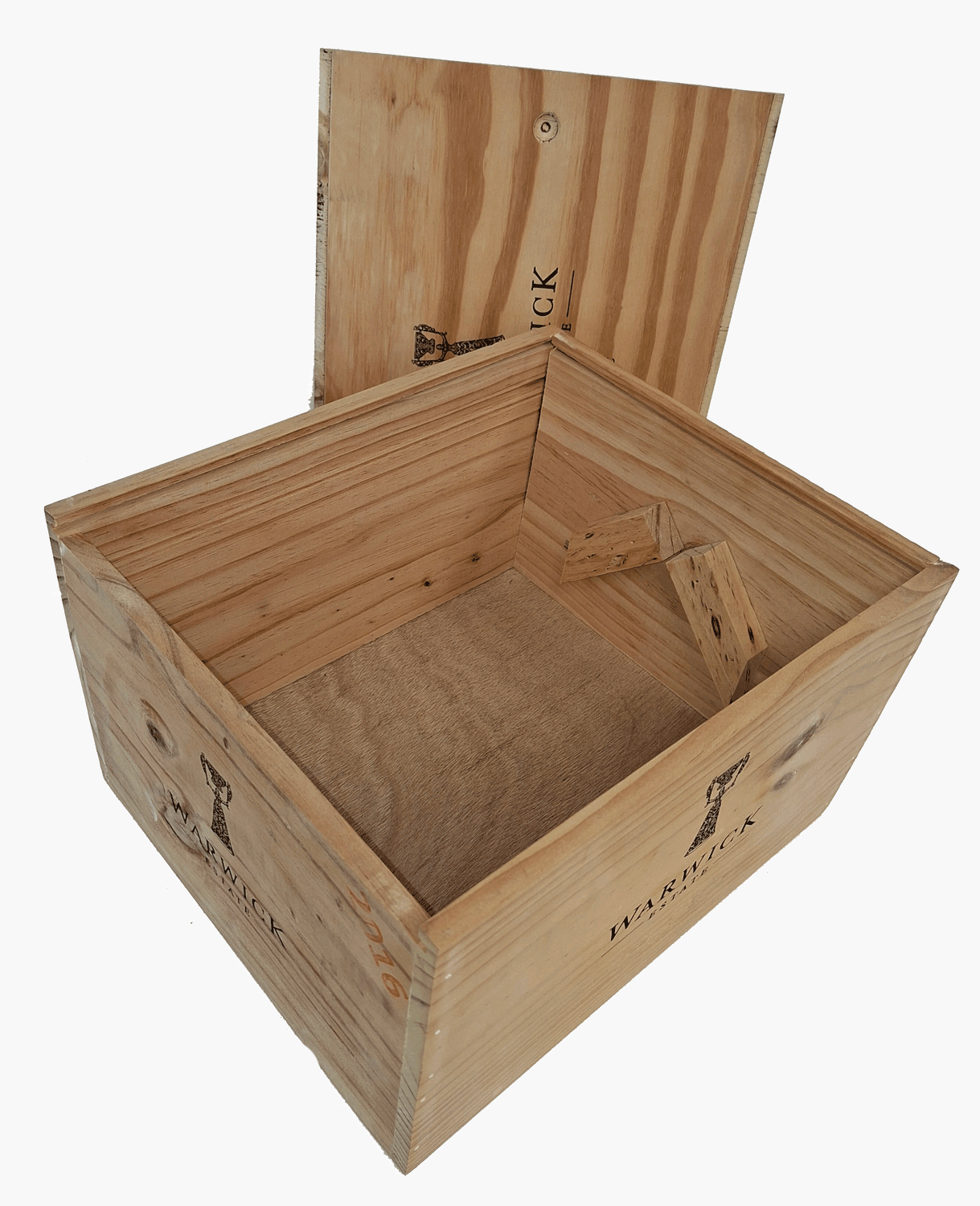
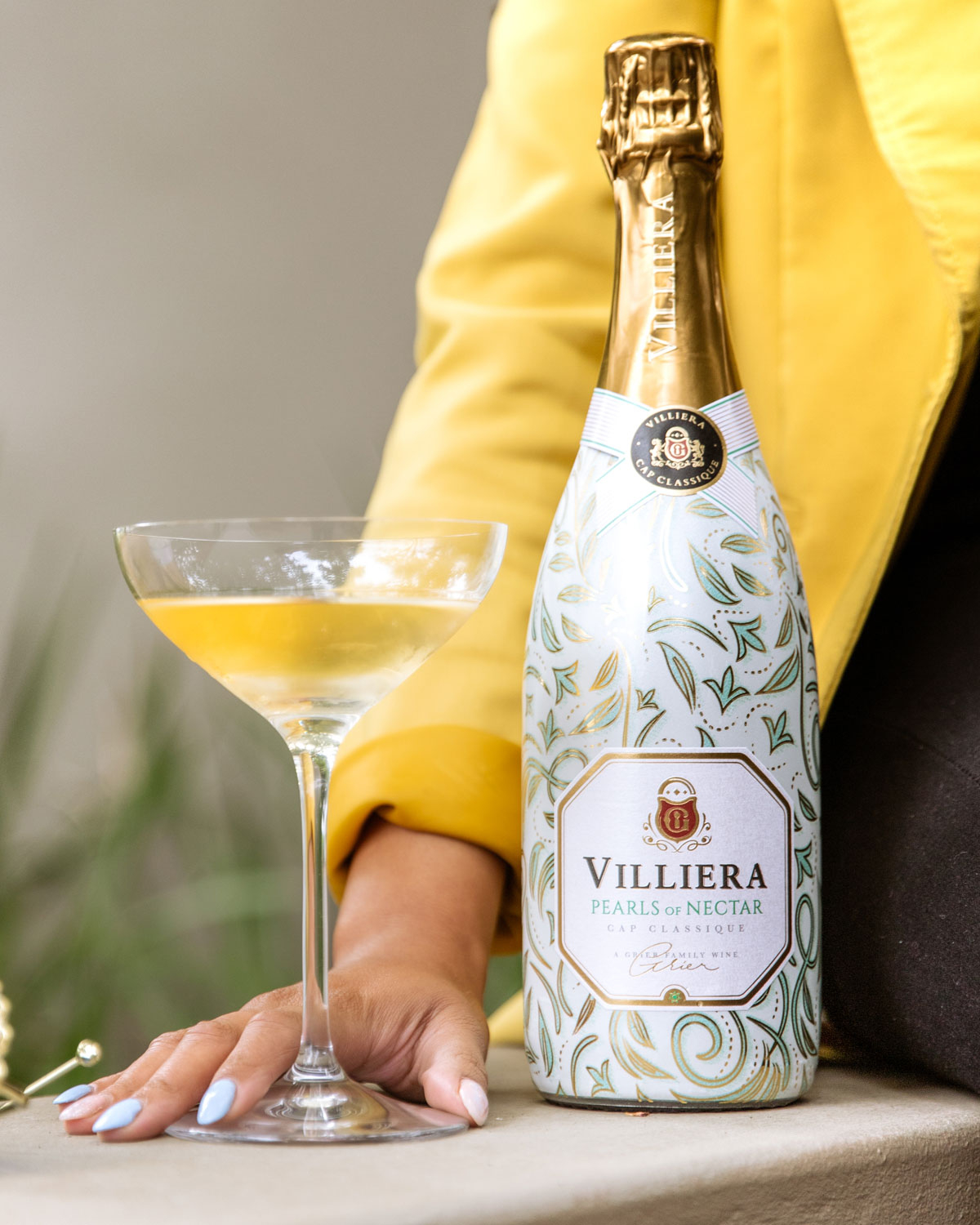
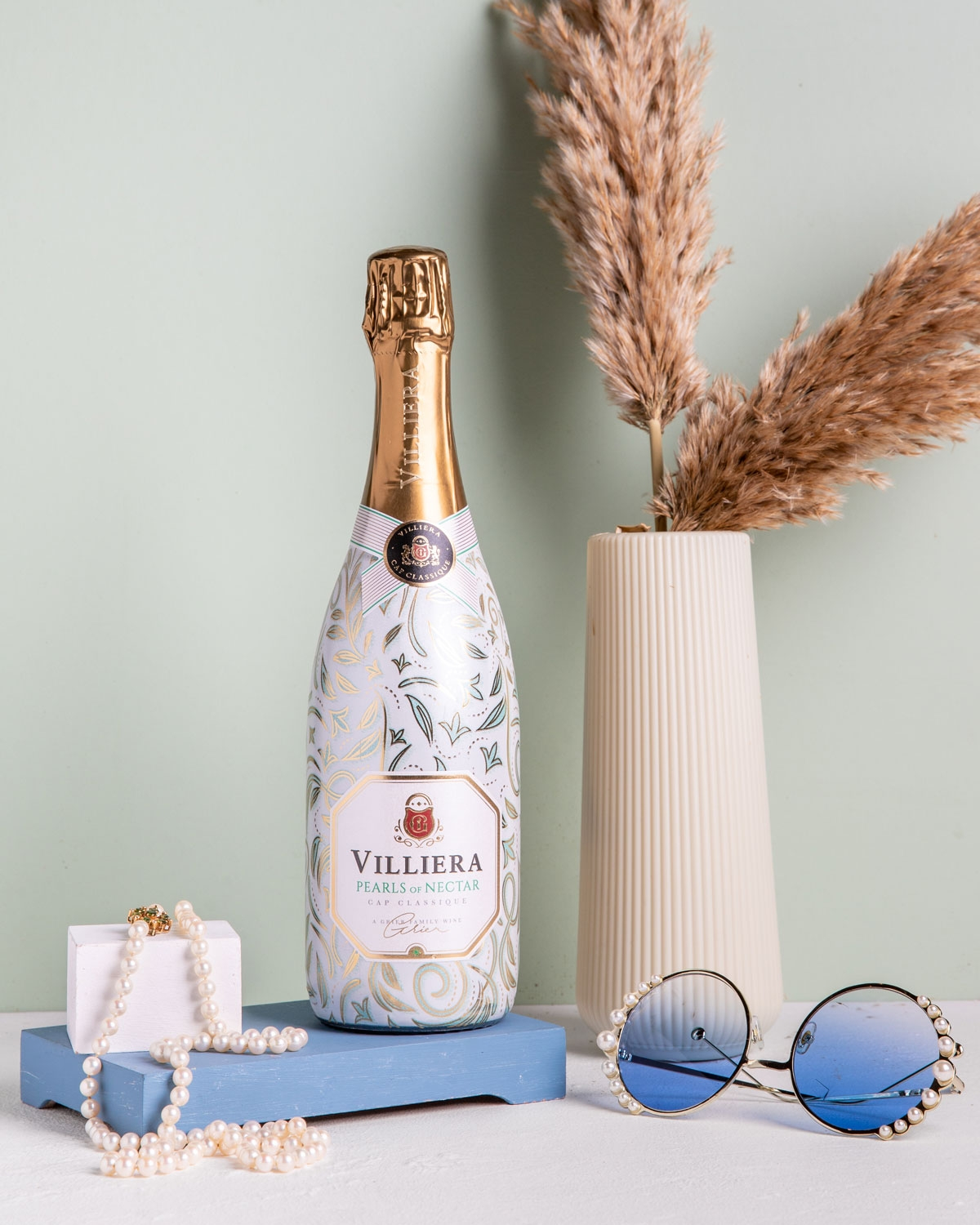
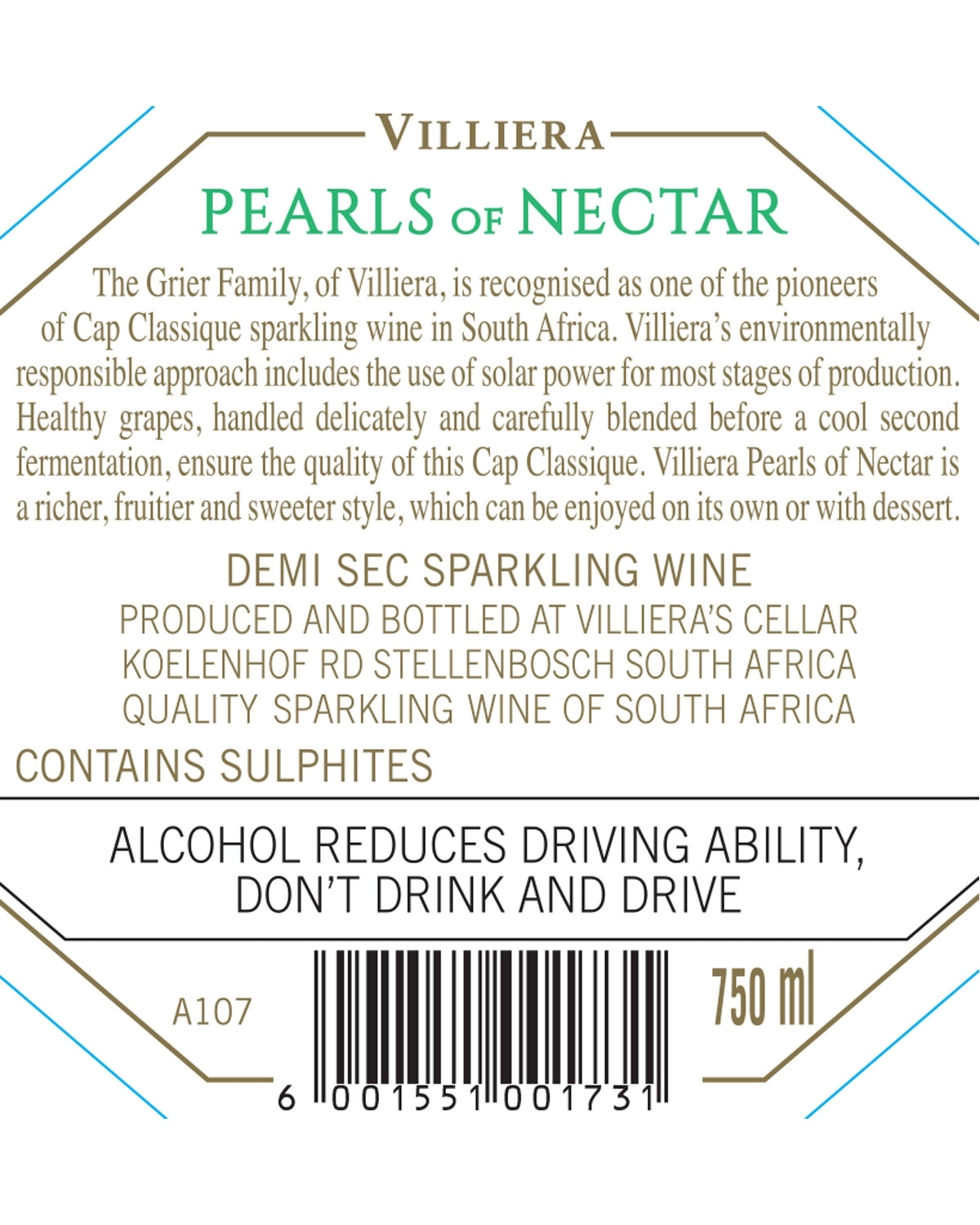












€19.95*
Available, delivery time: 2-5 days
- Fruit-driven Cap Classique from Chardonnay 🍋🥂
- Harmonious sweetness-acidity play on the palate 🍯✨
- Perfect companion to a delicious dessert 🍰
Made from Chardonnay grapes, this sparkling wine delights with its fruit-forward character and elegant, fine bubbles.
A beautiful balance between sweetness and acidity gives the wine its charm and a smooth, lingering finish.
The name “Pearls of Nectar” refers not only to its delicate mousse but also to the nectar pearls of the many indigenous flowers planted at Villiera, attracting birds and insects – a celebration of life and nature.
Enjoy the Villiera Pearls of Nectar on its own, with light dishes, or as a refined dessert companion.
Awards
- Jg. 2025
- 4 John Platter Stars
- Winery
- Villiera
- Grape Variety
- Chardonnay
- Bottle Top
- Cork
- Origin
- South Africa
- Appellation
- Stellenbosch
- Price
- €19.95*
- Price/Liter
- €26.60*
- Filling Quantity
- 0,750 l
- Alcohol Strength
- 11,5 % Vol.
- Acidity
- 7,6 g/l
- Residual Sugar
- 38 g/l
- In the Cellar
- Underwent the second fermentation in the bottle and was left on the lees for 18 months.
- Serve at
- 6-8 °C
- Best Before
- 2028
- Allergen
- Contains Sulphite
- Producer
- Villiera, Cnr R101, R304, Koelenhof, Stellenbosch, 7605, South Africa
- Importer
- CAPREO GmbH- Gildeweg 10- 46562 Voerde- Germany
- Food Business Operator
- CAPREO GmbH, Gildeweg 10, 46562 Voerde, Germany
Villiera – successful family-owned winery in Stellenbosch
Villiera wines are a reflection of their terrior
Villiera places great importance on sustainability
0 of 0 reviews
OUTLET WINE SALE | Save over 20% now!
Content: 0.75 Liter (€39.93* / 1 Liter)
and Ingredients can be found here
Content: 0.5 Liter (€50.00* / 1 Liter)
and Ingredients can be found here
Content: 4.5 Liter (€5.54* / 1 Liter)
Last lowest price: €24.95*
and Ingredients can be found here
Content: 0.75 Liter (€21.27* / 1 Liter)
Last lowest price: €15.95*
and Ingredients can be found here
Content: 1.5 Liter (€16.67* / 1 Liter)
Last lowest price: €25.00*
and Ingredients can be found here
Content: 4.5 Liter (€9.33* / 1 Liter)
Last lowest price: €42.00*
and Ingredients can be found here
Content: 0.75 Liter (€22.60* / 1 Liter)
and Ingredients can be found here
Content: 0.75 Liter (€8.67* / 1 Liter)
Last lowest price: €6.50*
and Ingredients can be found here
Content: 0.75 Liter (€25.27* / 1 Liter)
Last lowest price: €18.95*
and Ingredients can be found here
Content: 0.75 Liter (€13.27* / 1 Liter)
Last lowest price: €9.95*
and Ingredients can be found here
Content: 0.75 Liter (€39.93* / 1 Liter)
Last lowest price: €29.95*
and Ingredients can be found here
Content: 0.75 Liter (€14.67* / 1 Liter)
Last lowest price: €11.00*
and Ingredients can be found here
Content: 0.75 Liter (€16.67* / 1 Liter)
Last lowest price: €12.50*
and Ingredients can be found here
Content: 4.5 Liter (€10.43* / 1 Liter)
Last lowest price: €46.95*
and Ingredients can be found here
Content: 0.75 Liter (€41.93* / 1 Liter)
Last lowest price: €31.45*
and Ingredients can be found here
Content: 0.75 Liter (€16.00* / 1 Liter)
Last lowest price: €12.00*
and Ingredients can be found here
Content: 4.5 Liter (€13.32* / 1 Liter)
Last lowest price: €59.95*
and Ingredients can be found here
Content: 0.75 Liter (€42.60* / 1 Liter)
Last lowest price: €31.95*
and Ingredients can be found here
Content: 0.75 Liter (€38.67* / 1 Liter)
Last lowest price: €29.00*
and Ingredients can be found here
Content: 0.75 Liter (€53.27* / 1 Liter)
Last lowest price: €39.95*
and Ingredients can be found here

FREE SHIPPING
● VALID ON ALL ORDERS
● ONLY UNTIL TODAY
● ONLY UNTIL TODAY
HAVE FUN SHOPPING!

WILD WINE WEEK
BIGGEST SALE OF THE YEAR
● Up to 50% Discount
● Over 100 Wines on Sale
● Changing Daily Deals
● Over 100 Wines on Sale
● Changing Daily Deals
DISCOVER NOW!
Also try our Premium Olive Oils
Content: 0.5 Liter (€27.00* / 1 Liter)
and Ingredients can be found here
Content: 0.5 Liter (€33.00* / 1 Liter)
and Ingredients can be found here
Content: 0.5 Liter (€33.00* / 1 Liter)
and Ingredients can be found here
Content: 0.5 Liter (€33.00* / 1 Liter)
and Ingredients can be found here
Content: 0.5 Liter (€27.00* / 1 Liter)
and Ingredients can be found here
Customer Feedback
What our Customers say
Perfect Wine Gift: Our new Gift Boxes
and Ingredients can be found here
and Ingredients can be found here
and Ingredients can be found here
and Ingredients can be found here
and Ingredients can be found here
and Ingredients can be found here

